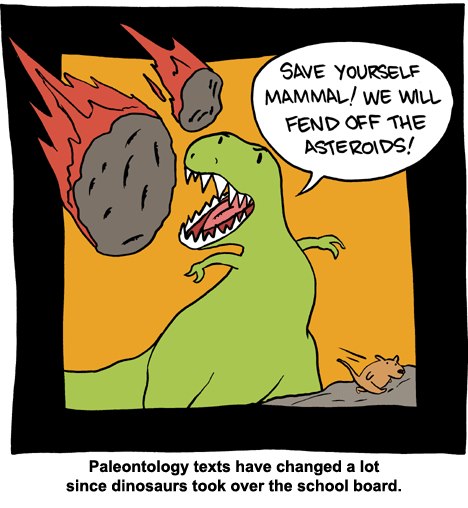Scientists have unearth credible evidence to confirm a large asteroid was responsible for the extinction of the dinosaurs over 66 million years ago, it has been announced. This particular extinction event, which paved the way for the evolution of our species, has been attributed to several different things over the years. From climate change, a nuclear winter caused by basaltic lava eruptions of massive volcanoes in western India, an influx of radiation from a nearby supernova explosion (or perhaps a gamma-ray burst) to finally, an asteroid impact, which has been a favorite of biologist and paleontologist over the course of the past few decades.
According to Paul Renne, the director at Berkeley University’s Geochronology Center in California, the asteroid impact was quite likely one of several contributing factors to the downfall of the prehistoric animals, as many of them were already on their way to extinction; however, Renne claims that this was the main catalyst that “pushed Earth past the tipping point.”
The collision was never in question, but the exact date of it is. Scientists have been trying to determine if the impact took place more than 300,000 years after the last of the dinosaurs had already died off in the Cretaceous-Tertiary extinction event, which is where Renne and his team comes in: Using high-precision radiometric dating analysis, in this case “argon-argon dating,” the team were able to determine the most precise date yet of the impact: 66,038,000 years ago – give or take 11,000, which coincides with the impact of an asteroid or a comet in the Caribbean off the Yucatan coast of Mexico. “We have shown that these events are synchronous to within a gnat’s eyebrow,” Renne continued.
Potassium-argon dating is perhaps, one of the most reliable means of determine how long a sample of materials have been decaying, as it utilizes the fact that potassium, a naturally radioactive element, decays into argon with regularity.
The Destruction of Asteroid Impacts:
It only takes a relatively small asteroid to cause quite a bit of destruction on our planet, as any object large enough to survive the descent through Earth’s atmosphere would acquire quite a bit of kinetic energy before it hits the surface of the planet, traveling at VERY fast speeds. Just to throw out one example of this, if an object had a diameter of about 10 kilometers and was traveling at speeds between [approximately] 15 to 20 kilometers per second, it would have a kinetic energy equal to 300 million nuclear bombs, going off simultaneously.
Almost instantly after the impact, the Earth would undergo rapid changes, including; “intense blinding light, severe radiation burns, a crushing blast wave, lethal balls of hot glass, winds with speeds of hundreds of kilometers per hour, and flash fires.” The rubble would be forced into the stratosphere, where it would block a majority of the sunlight from the plants and animals on the ground, which becomes problematic for the photosynthesis plants must undergo to derive energy to survive. With no plants converting sunlight into energy, our oxygen levels would decrease dramatically. I don’t have to explain why that is not an ideal situation to find ourselves in.
The asteroid that hit our planet at the end of the Mesozoic Era was almost 6 miles (10 km) across, generating more energy than nearly 100 trillion tons of TNT, which is more than a billion times more energetic than the bombs that destroyed Nagasaki and Hiroshima during WWII — ultimately leaving behind a crater named Chicxulub, which is more than 110 miles (180 kilometers) wide.







Write a Comment